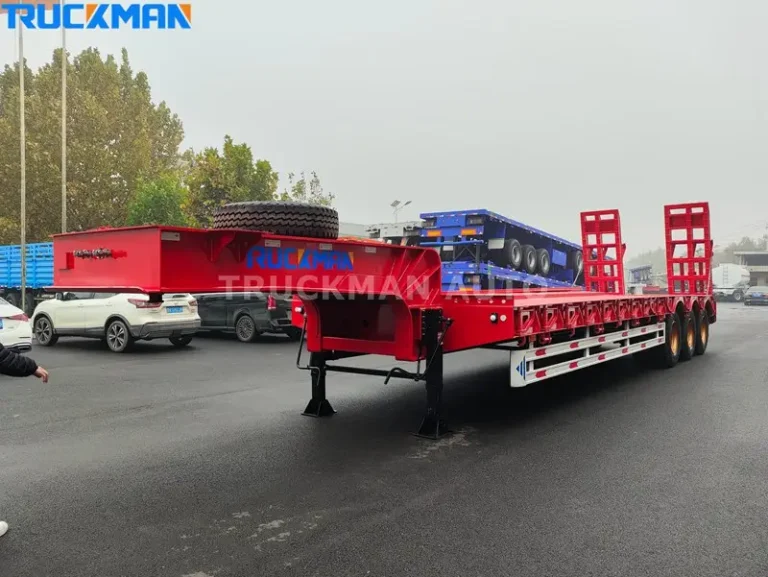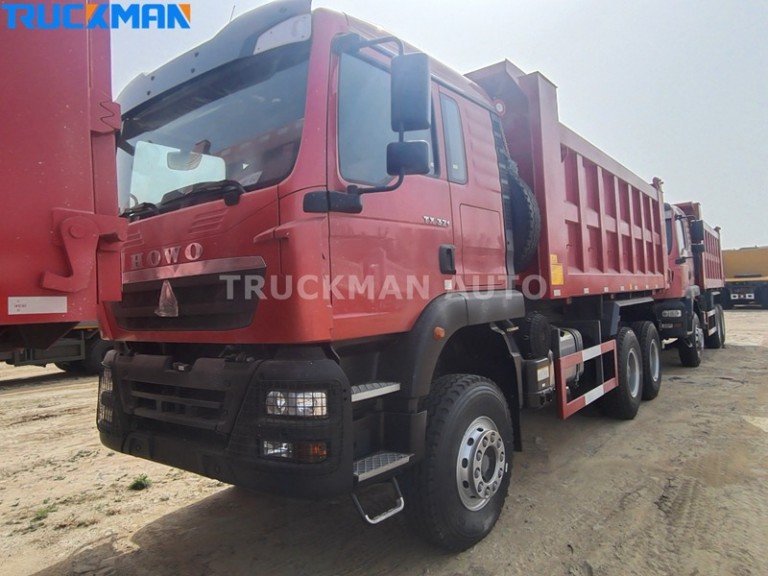Shacman trucks excel in construction and transportation, but they often face maintenance challenges. These include engine performance issues, hydraulic system failures, brake problems, transmission faults, and wear on tires and suspension systems. In this article, Truckman Automobile shares practical tips to troubleshoot and prevent these issues, helping you reduce downtime and extend your truck’s lifespan.
Table of Contents
Engine Issues and Solutions
The engine is the heart of your truck. Its performance directly impacts driving quality and vehicle longevity. Many engine problems arise from poor maintenance or aging components. Below, we’ll explore common issues and solutions, focusing on starting problems, power loss, and preventive care.
Starting Issues and Troubleshooting
Starting problems often result from a weak battery or faulty components. Use a voltmeter to check the battery voltage. If it’s below 12.6V, charge or replace it immediately. Batteries are especially vulnerable in extreme weather.
- Battery and Ignition System Checks: A stable ignition system is essential. For diesel models, check the glow plugs. For natural gas models, inspect the spark plugs and ignition coil voltage.
- Fuel Filter and Spark Plug Maintenance: A clogged fuel filter can block fuel flow, making it hard to start the engine. Worn spark plugs in natural gas models can fail to ignite the fuel mixture. Inspect these components every 5,000 miles to ensure smooth combustion.
Power and Performance Issues
Engine power loss or unstable performance can stem from clogged filters, overloading, or worn turbocharger parts. These issues often show up during uphill drives or heavy loads. High fuel consumption may result from poor driving habits, incorrect tire pressure, or faulty sensors.
- Fixing Low Engine Power: If the engine lacks power, check the turbocharger and air filter. Dust buildup or worn turbo parts can restrict airflow, reducing combustion efficiency. Regular cleaning can resolve 25% of such issues.
- Correcting Air-Fuel Ratio Imbalance: An incorrect air-fuel ratio increases fuel consumption. Inspect the gas metering valve and NGP sensor (for natural gas models) and clean them as needed. Also, monitor engine oil levels. Low oil can cause unusual noises or power fluctuations.
Natural gas models may also face low gas pressure, which disrupts ignition and triggers fault codes like 43. This often results from blockages in the gas supply or electrical issues. Check the wiring and gas system to resolve these problems.
Preventive Engine Maintenance Tips
Preventive care is key to a long-lasting engine. Replace filters regularly and inspect ignition components, including spark plugs (natural gas models) and glow plugs (diesel models). Clean battery connections to avoid starting issues. Below is a quick maintenance guide:
| Maintenance Task | Frequency | Benefit |
|---|---|---|
| Battery Voltage Check | Monthly | Prevents Starting Issues |
| Fuel Filter Replacement | Every 10,000 Miles | Ensures Smooth Fuel Flow |
| Spark Plug/Glow Plug Check | Every 5,000 Miles | Maintains Efficient Combustion |
Shacman Truck Hydraulic System Failures
Hydraulic system failures are common and costly. These systems power lifting and dumping functions, making their reliability critical for smooth operations.
- Identifying and Repairing Hydraulic Fluid Leaks: Leaks are the most frequent issue. Look for oil stains, slow system response, or low fluid levels. Check hoses, seals, and fittings for damage or looseness.
- Fixing Slow or Unresponsive Lifting: Sluggish lifting often results from low or contaminated hydraulic oil. Refill with the correct oil type and maintain clean fluid to prevent wear. Contamination causes up to 50% of hydraulic failures.
- Maintaining Hydraulic Fluid Levels and Quality: Regularly check hydraulic fluid for signs of aging. Replace it if needed. Quarterly checks are recommended for heavy-duty use.
Most Common Maintenance Issues with Shacman Trucks
Shacman truck owners should focus on maintaining brakes, transmissions, and tire suspension systems. These components are prone to wear under heavy loads.
Brake System Issues and Solutions
Brake problems are a major safety concern. Noise often signals worn pads. Check pad thickness regularly and replace them if they’re too thin. Brake fade, caused by overheating, can be avoided with proper driving techniques and regular fluid checks.
- Addressing Brake Noise and Fade: Replace pads when you hear noise. To prevent fade, manage heat buildup and maintain brake fluid levels.
- Maintaining Brake Fluid and Components: Air in the brake lines can cause sluggish pedal response. Keep fluid levels stable and ensure the system is airtight.
Transmission Failures and Repairs
Transmission issues, like shifting problems or gear slippage, are common. These often result from low fluid levels or dirty filters. In manual models, clutch plate wear is a frequent cause of slippage. In automatic models, solenoid faults are more likely. Clean fluid is essential for prevention.
| Maintenance Task | Frequency | Benefit |
|---|---|---|
| Check Transmission Fluid Level | Every 5,000 Miles | Prevents Low Fluid Levels |
| Change Transmission Fluid | Every 30,000 Miles | Removes Contaminants |
| Inspect Transmission Filter | Every 15,000 Miles | Ensures Smooth Fluid Flow |
Tire and Suspension Maintenance
Proper tire pressure, rotation, and suspension lubrication reduce wear and improve stability. For heavy-loaded Shacman trucks, these steps are crucial. Inspect shock absorbers and springs regularly to catch issues early. Incorrect tire pressure increases fuel consumption and affects other systems, so check it monthly.
Conclusion
Proactive maintenance ensures your Shacman truck performs well in tough conditions. Always use genuine parts for repairs, and consult heavy-duty vehicle experts for complex problems. Visit the Shacman official website for authorized dealers and service points. If you’re in the market for a new truck, explore Shacman for sale options to find a model that fits your operational needs.Regular maintenance of the engine, fuel system, and brakes can prevent issues like power loss, high fuel consumption, and circuit faults. Replace engine oil instead of just topping it up, and maintain filters, injectors, and wear parts like brake pads.
FAQs
What are the typical brake issues with Shacman trucks?
Common problems include pad wear, low brake fluid, and component damage. Regular checks and timely replacements can prevent risks.
How to identify hydraulic fluid leaks in a Shacman dump truck?
Look for oil stains, low fluid levels, or unusual noises. Inspect hoses, seals, and cylinders for damage.
Why is my Shacman truck’s engine performing poorly?
This could be due to clogged filters, spark plug failure (natural gas models), or low compression. Regular checks and updates can restore performance.
How often should I check the transmission fluid in my Shacman truck?
Check it during daily maintenance. Low or contaminated fluid can cause faults, so replenish or replace it as needed.
What are the signs of a faulty ignition coil in a Shacman truck?
Signs include engine misfires, unstable idling, or starting trouble. Inspect and replace the coil promptly to avoid further damage.
How to maintain the suspension system of a Shacman truck?
Inspect shock absorbers and springs regularly. Replace worn parts and adjust tire pressure to ensure smooth driving.






